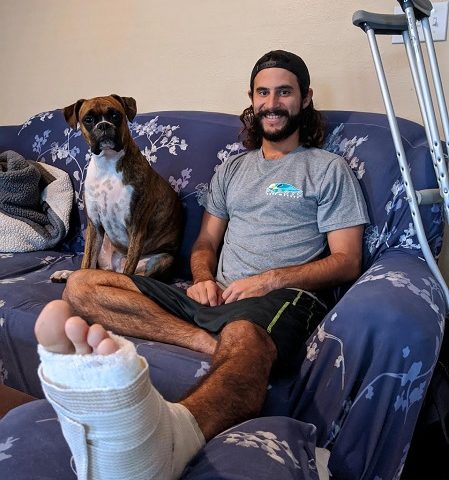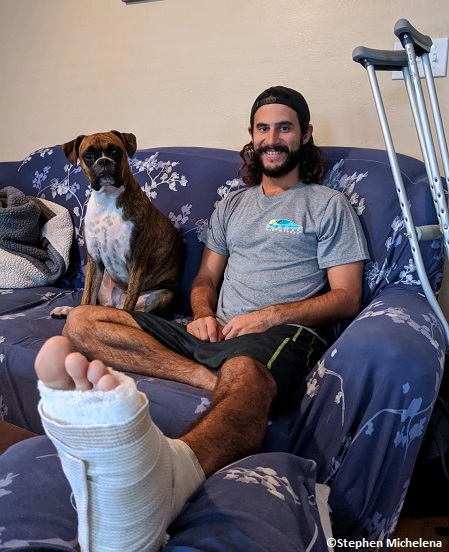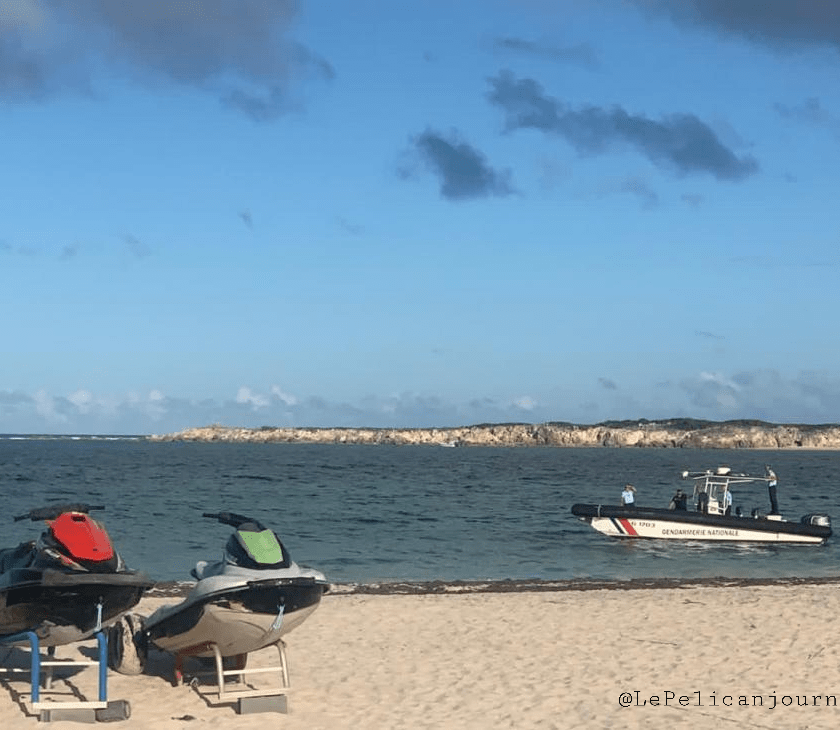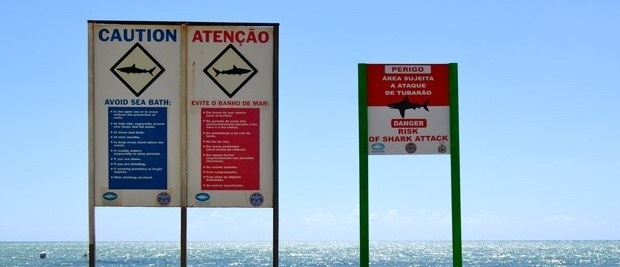An experienced surfer fell off his surfboard and onto shark Oct. 27.

Stephen Michelena, 32, had caught his last wave into shore around 12:45 p.m. in the south inlet off New Smyrna Beach, Florida.
As the wave broke over shallower water, and unsure of his depth, instead of jumping feet first to avoid a sprain or injury, Michelena leaned back and fell into extremely murky water, almost bottom first.
“The instant I landed in the water was when the shark bit my foot. I landed directly on top of the shark,” he told Tracking Sharks while recovering at home. “I could feel the shark directly on my back. It freaked out, too. I’m sure I startled it.”
The estimated 4- to 5-foot shark thrashed under the surfer’s back for a second or two before swimming off.
Michelena had several moderate lacerations around his ankle and the side and bottom of his left foot.
He was able to hobble back to shore and was treated on scene by the beach patrol before being taken to the emergency room by a friend.
Doctors closed several lacerations using seven stitches and left some of the wounds open to heal naturally.
Michelena knows the risk and has no qualms about entering the water again, although it will take a month or two before his foot is healed.
“I know in the back of my mind that there is such a small, small, small, very small chance in Florida that you’re going to lose a limb or be killed by a shark.
“I think pretty much ever surfer from Florida who surfs the inlet feels the same way. They know you might get bit one day and it’s not going to be cool, but you will be okay,” he said.
While most local surfers know the risk, Michelena wishes there were more warnings for families and others who are unfamiliar with the area and come to the New Smyrna Inlet to swim.
“Especially in the summer, when it’s warmer and there is a bunch of shark activity. There is a lot of shark activity there, and if you are not surfing or in the shallow area, you really shouldn’t be there.
“I think people should be aware that there is a lot of marine activity from the inlet to about 1,000 yards south and should be cautious. There is plenty of space to swim farther down the beach.
“Two weeks ago, there was a little 8-year-old girl in the same hospital I was in. They said her leg was bitten pretty badly near the inlet. You never want to see that. I think it could be avoidable if people stayed away from the really concentrated areas,” Michelena said.
There have been a total of 87 shark attack bites (78 with injury, 23 of which are considered provoked*) publicly reported and verified in 2019. Five fatal**
All locations have been marked on the 2019 Shark Attack Map.
Fortyeight were reported in the U.S. (including one fatal), with 26 occurring in Florida (5 provoked), 14 in Hawaii (3 no injury, 4 provoked, 1 fatal) and 3 in California (2 no injury). Fifteen have been reported in Australia, zero fatal. Four unconfirmed bites worldwide are not included in the total count.
*Provoked defined as spearfishing, feeding sharks, fishing, etc. (listed with green marker).
**Two possible scavenge


